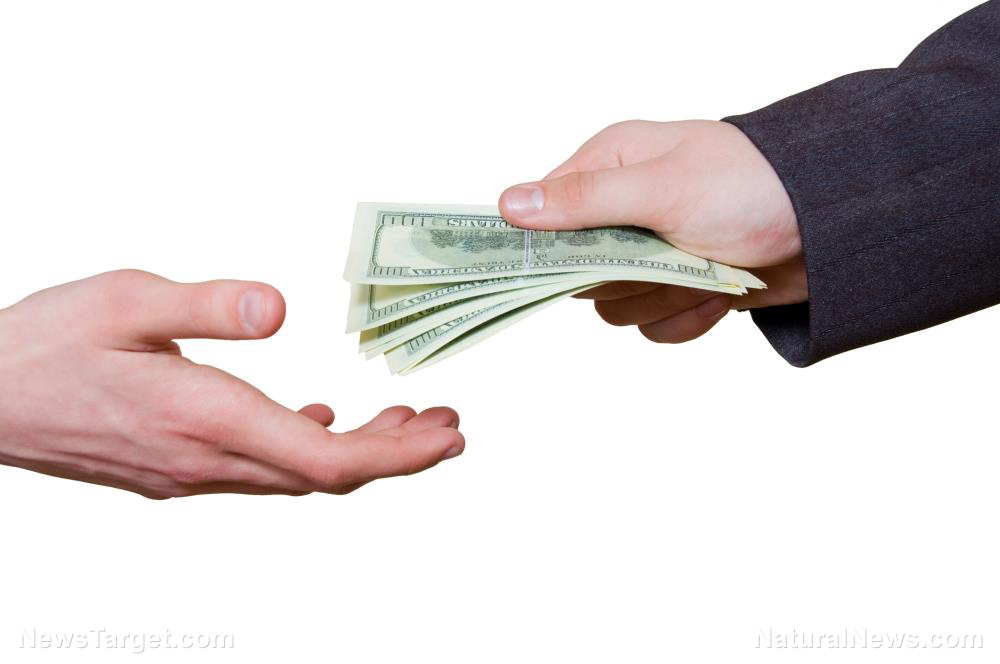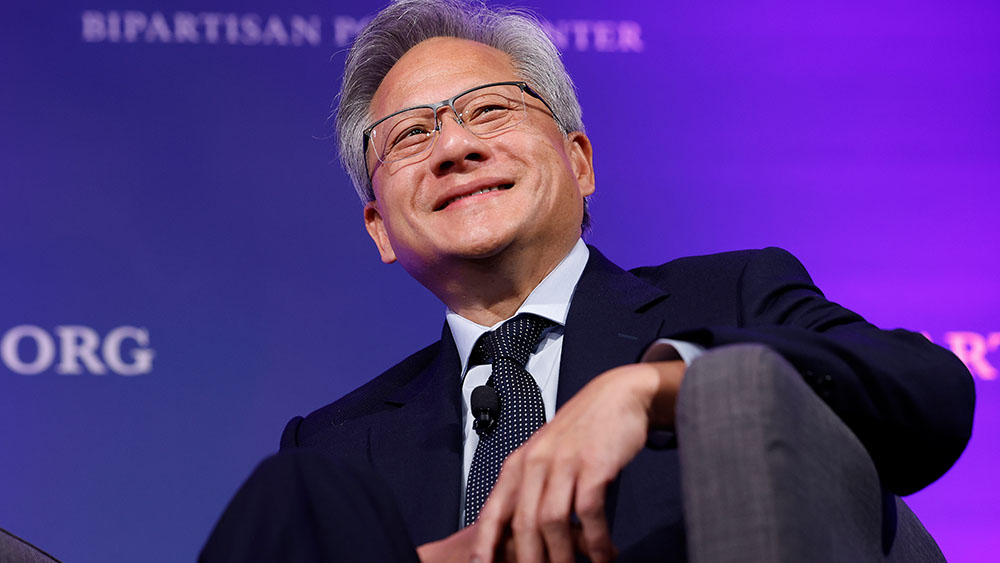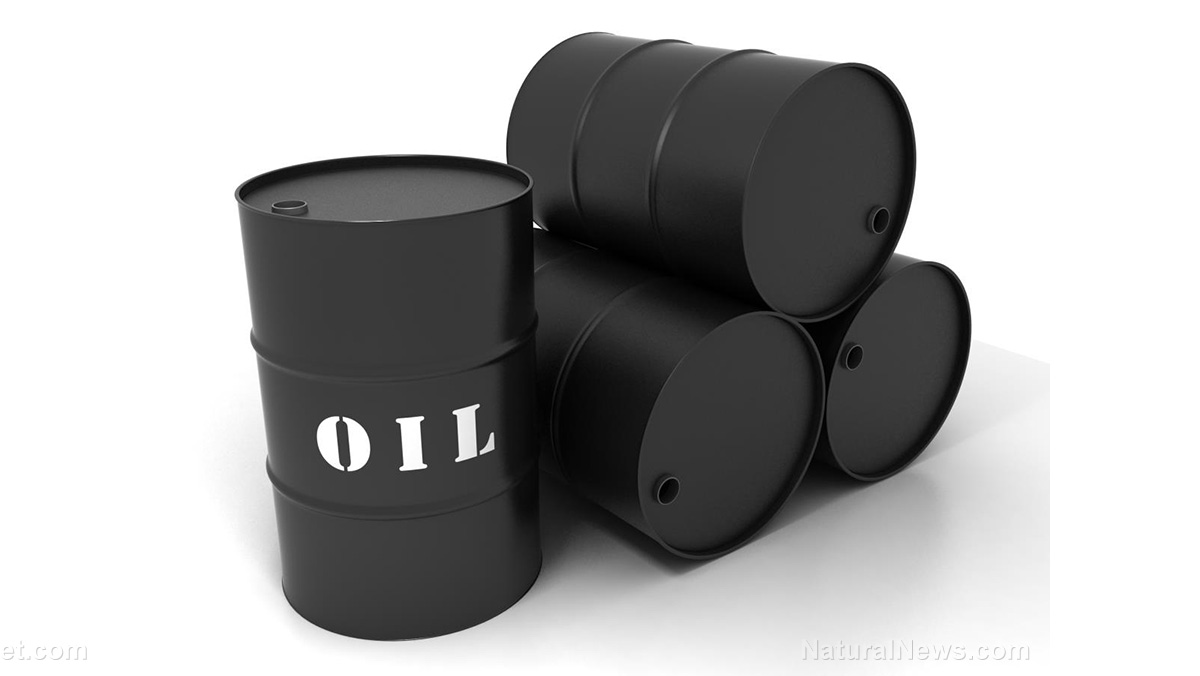Japan announces $135 billion stimulus package as Takaichi seeks to boost economy
11/22/2025 / By Kevin Hughes

- Japan approved a three trillion yen ($135 billion) stimulus package, its largest since the COVID-19 pandemic, aimed at combating inflation, boosting defense and reviving economic growth.
- Measures include 20,000 yen ($130) per child in cash payouts; 7,000 yen energy bill subsidies (January-March); 3,000 yen rice vouchers per person; and elimination of gasoline taxes
- The package focuses on price relief (cash handouts, tax cuts), economic growth (infrastructure, shipbuilding, strategic industries) and defense expansion (raising military spending to 2% of GDP by 2027)
- Japan’s national debt is three times its GDP, and economists warn the stimulus could strain bond markets, with 10-year yields hitting 1.817%—the highest since 2008.
- Prime Minister Sanae Takaichi faces opposition skepticism over whether the measures will curb inflation long-term. Meanwhile, Japan’s economy contracted 1.8% (annualized) last quarter, with core inflation at 3%, exceeding the Bank of Japan’s target.
Japan’s Cabinet approved a 21.3 trillion yen ($135 billion) stimulus package on Friday, Nov. 21, marking the largest fiscal intervention since the Wuhan coronavirus (COVID-19) pandemic.
The move aims to alleviate economic pressures from rising prices, bolster defense spending and revive Japan’s sluggish economy.
Prime Minister Sanae Takaichi, who took office last month, emphasized that the package prioritizes direct financial relief for households while strengthening long-term economic resilience.
BrightU.AI‘s Enoch explains that a stimulus package, also known as an economic stimulus package, is a set of policies implemented by a government to boost the economy, typically in response to an economic downturn or recession. The primary goal of a stimulus package is to encourage spending, increase economic activity and stimulate growth.
While stimulus packages can help to stimulate economic growth in the short term, they also have their criticisms and limitations. These can include increased government debt, potential inflation and the risk of creating moral hazard, where individuals or businesses take on more risk because they know the government will bail them out.
Key components of the stimulus package
The stimulus is structured around three main pillars:
- Addressing rising prices – Measures include cash handouts, energy subsidies and tax cuts to ease the burden on consumers facing inflation.
- Strengthening economic growth – Investments in infrastructure, shipbuilding and strategic industries aim to boost productivity.
- Enhancing defense and diplomatic capabilities – Japan plans to accelerate defense spending to 2% of GDP by fiscal year 2027, a significant increase from current levels.
Direct financial support for households
Japanese households are set to benefit form the following:
- Energy bill subsidies (averaging 7,000 yen per household from January to March).
- One-time cash payments of 20,000 yen ($130) per child to assist families amid soaring prices.
- Rice vouchers or coupons worth 3,000 yen ($20) per person, distributed by local governments.
- Elimination of gasoline taxes to reduce fuel costs.
Economic and political challenges
Despite the ambitious spending plan, Japan faces mounting national debt, which stands at three times the size of its economy. Takaichi acknowledged fiscal concerns but defended the stimulus as necessary.
“Through wise spending, we will change worries into hope and achieve a strong economy,” Takaichi told reporters. “What we should do now is to strengthen national power through expansionary spending, not cause harm through excessively contractionary policies.”
However, economists warn that the package could strain Japan’s bond market. Jesper Koll, expert director at Monex Group, told CNBC that the move “will spook Japanese government bond markets.” Yields on 10-year Japanese government bonds recently hit 1.817%, the highest since 2008.
Political hurdles and public reception
Takaichi’s government, a minority coalition, must secure parliamentary approval for a supplementary budget by year-end to fund the stimulus. Opposition lawmakers have questioned whether the measures will effectively curb inflation or merely provide temporary relief.
Despite skepticism, Takaichi enjoys strong public support, partly due to expectations that she will reform Japan’s aging political system. However, her recent comments criticizing China have sparked diplomatic tensions, contributing to a 2.4% drop in the Nikkei 225 index amid investor concerns.
Economic context
Japan’s economy, the world’s fourth-largest, contracted at an annualized rate of 1.8% in the July-September quarter. While exports to Asia rose 3.7%, shipments to the U.S. declined for the seventh consecutive month, partly due to higher U.S. tariffs imposed under President Donald Trump.
Core inflation (excluding volatile food prices) reached 3% in October, exceeding the Bank of Japan’s 2% target. The stimulus aims to boost GDP by 1.4%, projecting an economic uplift of 24 trillion yen ($155 billion).
Japan’s record-breaking stimulus underscores the government’s urgency to stabilize prices, revive growth and strengthen national security. However, with rising debt and political challenges, the long-term impact remains uncertain.
As Takaichi pushes forward, her administration’s ability to balance fiscal responsibility with economic recovery will be closely watched—both domestically and by global markets.
Watch the video below about President Donald Trump proposing $2,000 stimulus payments from tariff revenue.
This video is from the newsplusglobe channel on Brighteon.com.
Sources include:
Submit a correction >>
Tagged Under:
cash handouts, economic downturn, economic growth, energy subsidies, government debt, Inflation, Japan, national debt, recession, Sanae Takaichi, stimulus package, tax cuts
This article may contain statements that reflect the opinion of the author
RECENT NEWS & ARTICLES
COPYRIGHT © 2017 BUBBLE NEWS



















